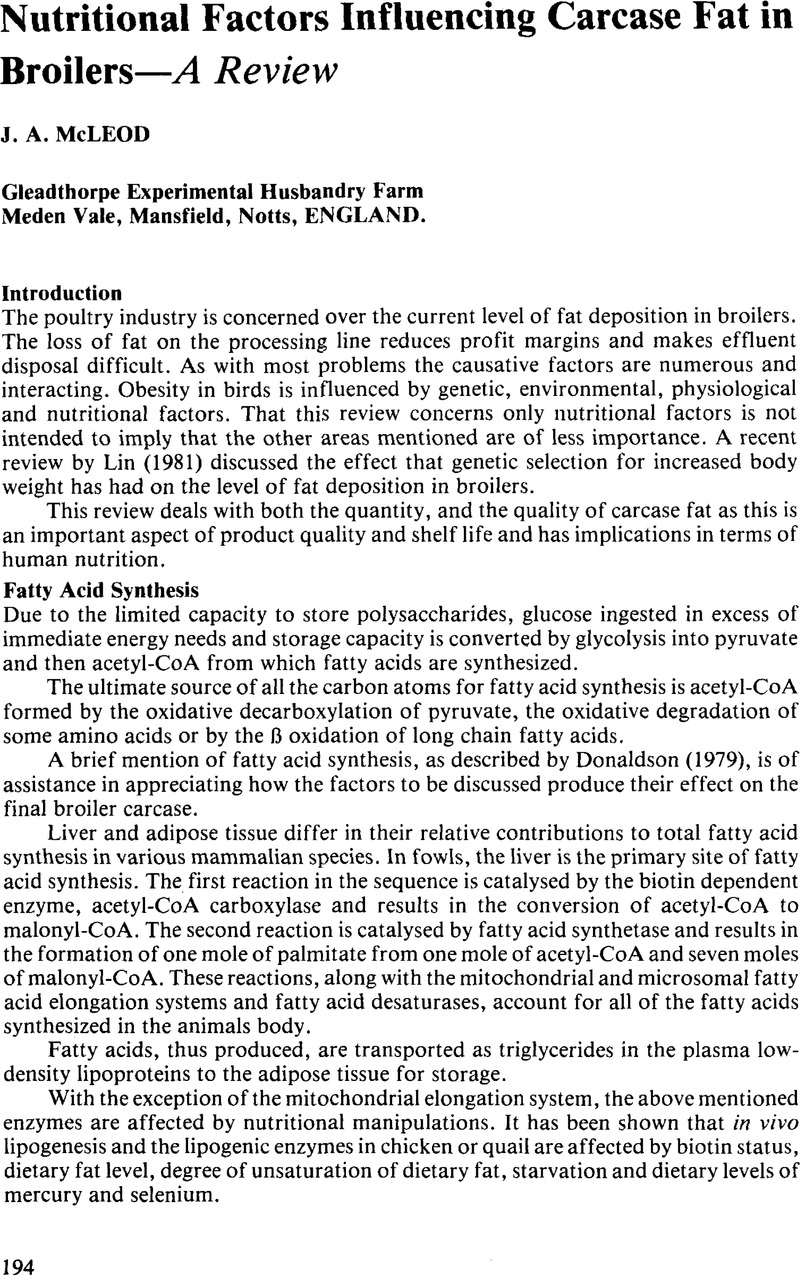Crossref Citations
This article has been cited by the following publications. This list is generated based on data provided by Crossref.
SIEGEL, P.B.
DUNNINGTON, E.A.
JONES, D.E.
UBOSI, C.O.
GROSS, W.B.
and
CHERRY, J.A.
1984.
Phenotypic Profiles of Broiler Stocks Fed Two Levels of Methionine and Lysine.
Poultry Science,
Vol. 63,
Issue. 5,
p.
855.
LEENSTRA, F.R.
1984.
Recent Advances in Animal Nutrition–1984.
p.
3.
Bartov, I.
1985.
Effect of dietary factors on the responses of chicks to corticosterone injections.
British Poultry Science,
Vol. 26,
Issue. 4,
p.
473.
Valdivie, M.
Poppe, S.
Meier, Hanna
and
Gabel, M.
1986.
Untersuchungen zur Energie- und Proteinkonzentration von Broilerrationen in Kuba.
Archiv für Tierernaehrung,
Vol. 36,
Issue. 12,
p.
1087.
LEENSTRA, F.R.
1989.
Recent Developments in Poultry Nutrition.
p.
131.
Lisboa, Joceli Souza
Silva, Dirceu Jorge da
Silva, Martinho de Almeida e
Soares, Paulo Rubens
and
Albino, Luiz Fernando Teixeira
1999.
Rendimento de carcaça de três grupos genéticos de frangos de corte alimentados com rações contendo diferentes teores de proteína.
Revista Brasileira de Zootecnia,
Vol. 28,
Issue. 3,
p.
548.
Özdoǧan, M.
and
Akşit, M.
2003.
Effects of Feeds Containing Different Fats on Carcass and Blood Parameters of Broilers.
Journal of Applied Poultry Research,
Vol. 12,
Issue. 3,
p.
251.
Villaverde, Cecilia
Baucells, Maria D.
Cortinas, Lucia
Hervera, Marta
and
Barroeta, Ana C.
2005.
Chemical composition and energy content of chickens in response to different levels of dietary polyunsaturated fatty acids.
Archives of Animal Nutrition,
Vol. 59,
Issue. 4,
p.
281.
Tavernari, F de C
Buteri, CB
Rostagno, HS
and
Albino, LFT
2009.
Effects of dietary digestible lysine levels on protein and fat deposition in the carcass of broilers.
Revista Brasileira de Ciência Avícola,
Vol. 11,
Issue. 2,
p.
99.
Ahiwe, Emmanuel U.
Omede, Apeh A.
Abdallh, Medani B.
and
Iji, Paul A.
2018.
Animal Husbandry and Nutrition.
Marapana, R. A. U. J.
Weerasinghe, W. M. P. B.
Senanayake, G. S. A.
Perera, P. R. D.
Seresinhe, T. R.
Ranasinghe, R. A. S. N.
and
Marapana, R. A. A. P.
2023.
Conversion of energy and protein rich food waste as an alternative feed ingredient in broiler feed formulation.
Tropical Animal Health and Production,
Vol. 55,
Issue. 2,



